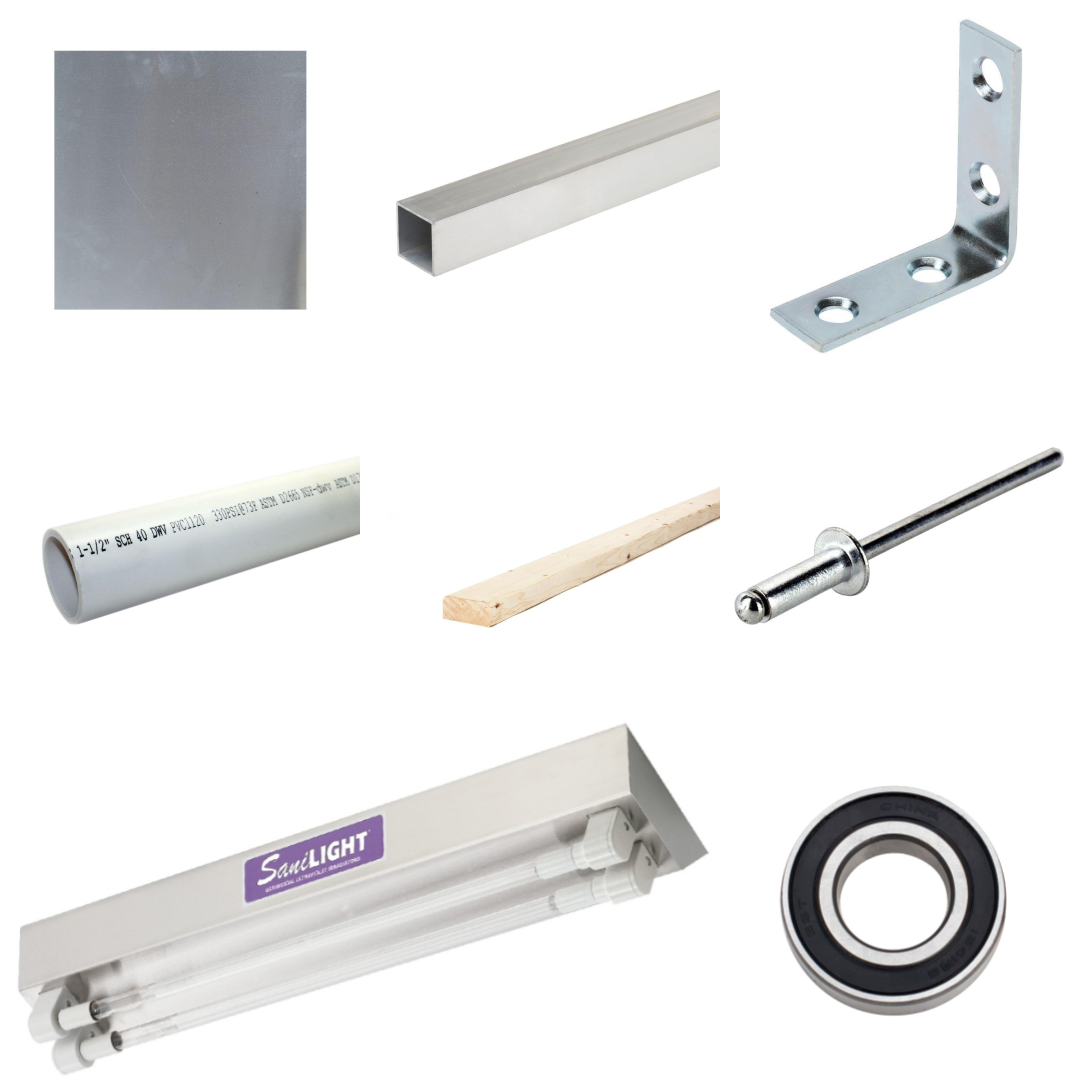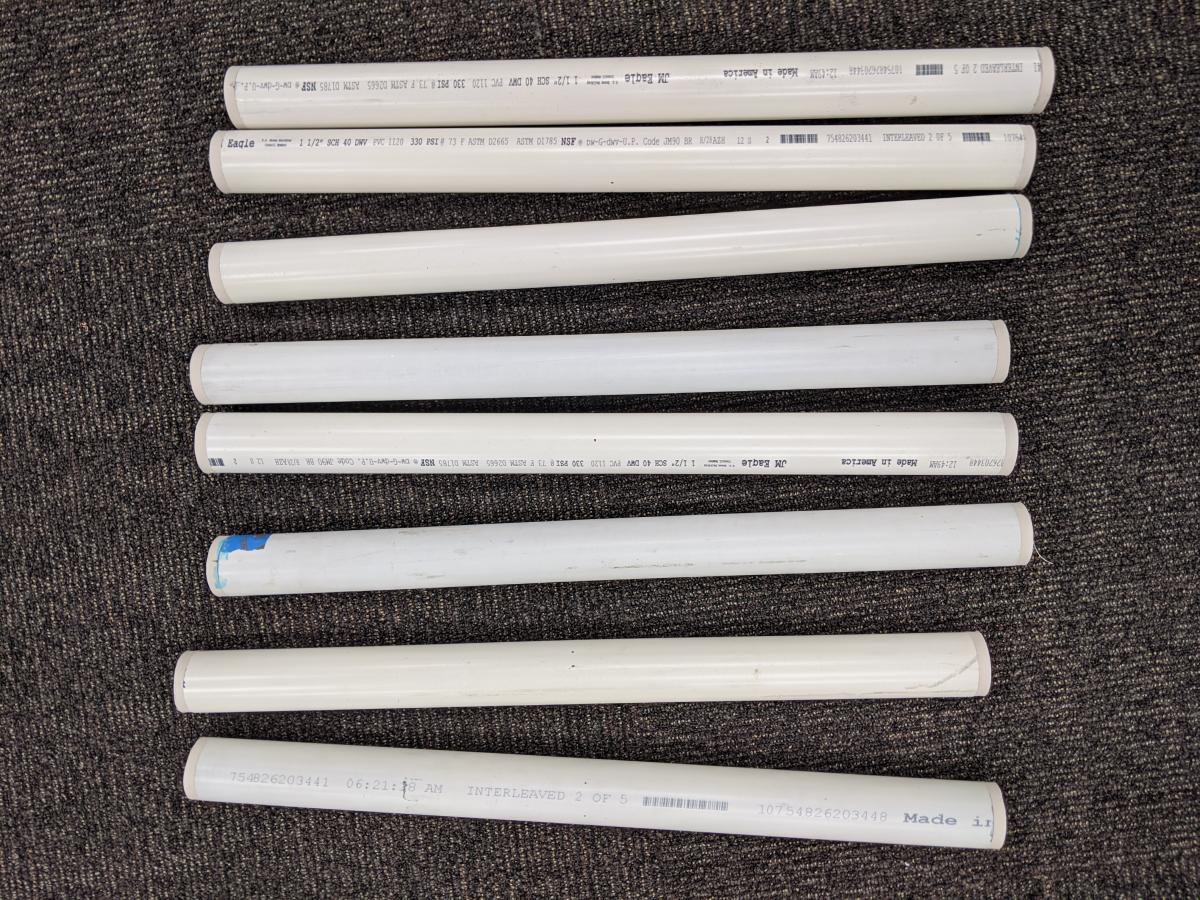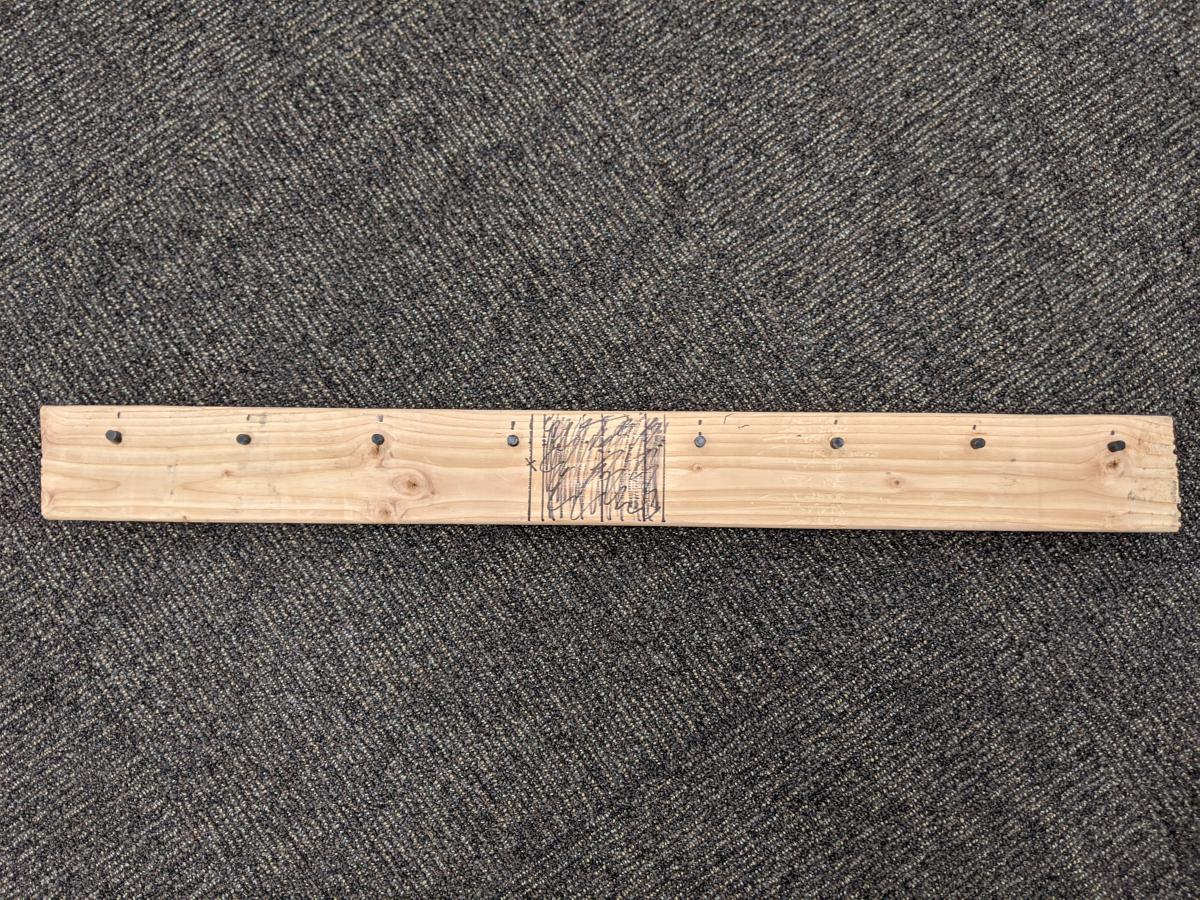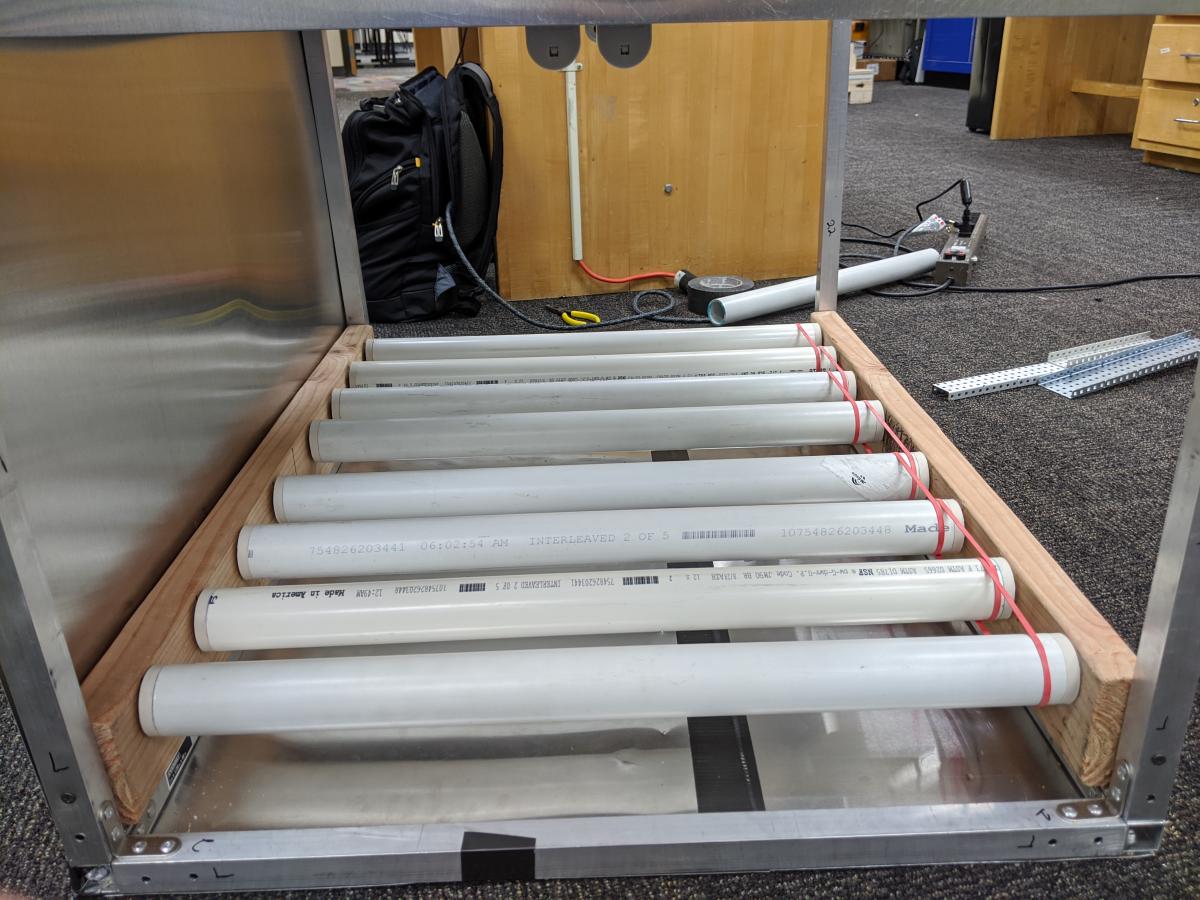Thanksgiving Break Construction & Sketch Model Presentation
Apologies for the late update! The team decided it was best to group two updates in one. Over Thanksgiving break, the team made significant progress in finishing our prototype. By the end of the week, we were able to transform the follow materials:

Into the frame...

with panels...
a conveyor...



and flaps.
The prototype won't get any awards for the cleanest design, but it will get testing done for a relatively cheap price—we will eventually have a professional manufacturer weld us a frame for the final product. Because we used brackets, it was necessary to run duct tape along the edges of the sheets to prevent UV light bleed. We allowed one of the faces to hinge to make the system more accessible considering how difficult it would be to work inside once all the flaps are installed. The rollers are simply PVC pipes with 3D printed endcaps to secure a ball bearing. They were locked in place with 3D printed axles drilled into the wood and chained together using rubberbands. We didn't have a motor on hand, so we borrowed a VEX V5 motor that would rotate a wheel adjacent to one of the pipes. The team found that rubberbands didn't have enough tension/grip to rotate all rollers at the same speed. In the future, we will print new endcaps with teeth so that the rollers can be chained with chain and sprocket. The flaps work just fine, but there is some worry about them being too heavy for bins to push through (bins going through x-ray machines have more friction due to greater weight combined with the rubber conveyor belt). You might have noticed that most of the electronics are missing—we are still wiring everything through an Arduino at the moment, so it would have been a huge hassle to install everything onto the frame.
December 6th, 2019 was the date of our sketch model presentation where we presented our solution to all the seniors and several of the instructors.
Our control system is on the right. We currently have a AC/DC adaptor to drive the pump and lamps, both of which have relays hooked up to the Arduino. Currently, our ultrasonic senor and pump are working, but we are still designing a nozzle to disperse the solution. We will also be testing differents frequencies of pulsing UV to determine if it there is any effect on UV dosage. Stay tuned for further elaboration before the holiday break!

